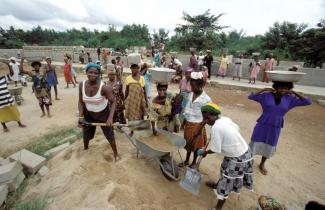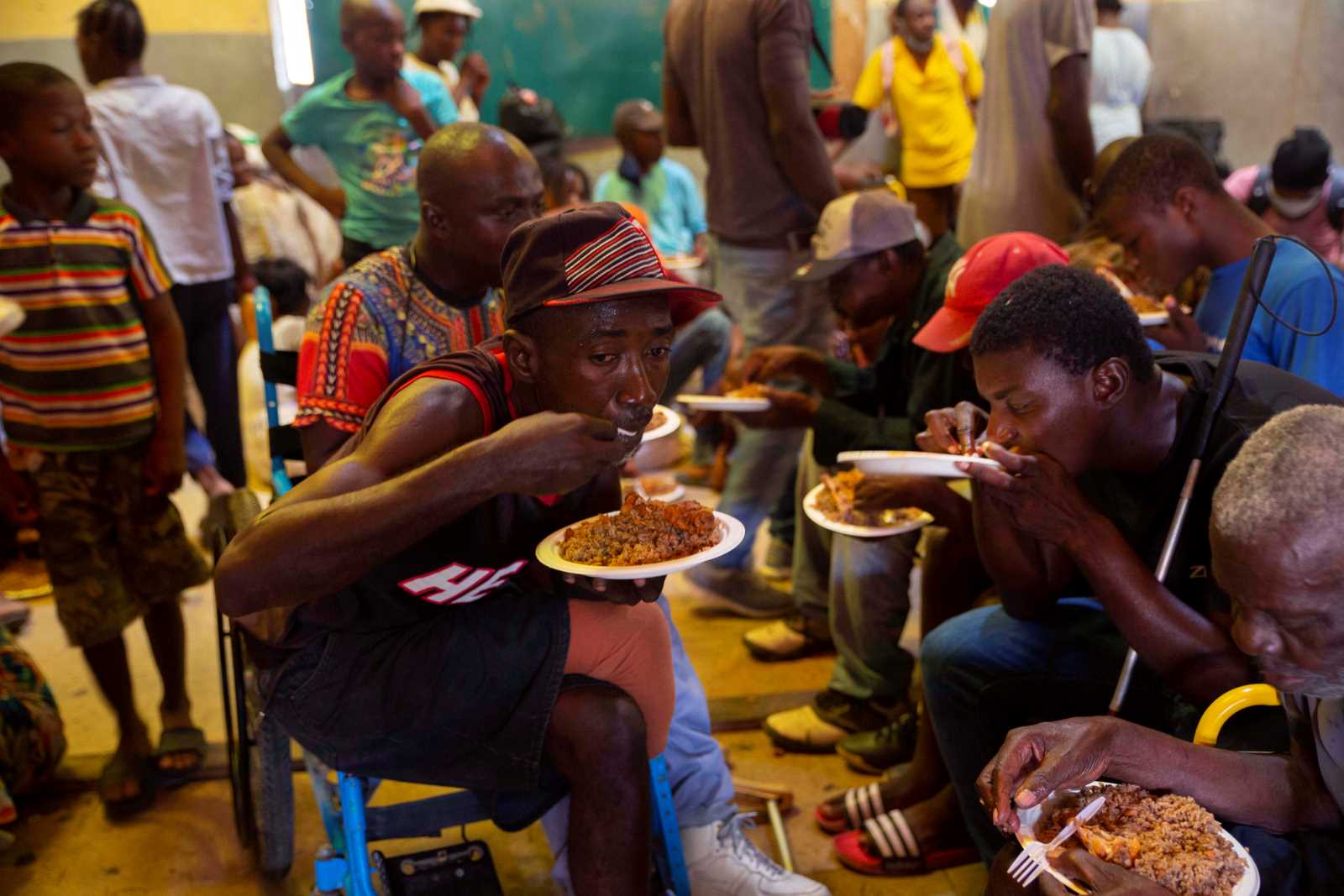HIPC Initiative
Back to square one

Until 1996, poor and heavily indebted countries could only obtain debt relief from bilateral creditors, but not from multilateral creditors like the World Bank, the IMF or the regional development banks. But since governments very rarely granted debt relief, over 40 poor countries found themselves in a veritable debt trap. Economic development became practically impossible. In some cases, the debt burden was absurdly heavy.
By that point, multilateral institutions had become the most important creditors for many countries concerned. The reason was that they helped poorer nations make their ongoing debt-service payments by issuing them new loans when private and bilateral lenders were no longer willing to do so. Unlike bilateral debt, however, multilateral debt was officially considered ineligible for rescheduling.
There was no international treaty or clause in the charters of multilateral institutions that prevented them from relieving debt in cases of excessive indebtedness. Nonetheless, the conventional wisdom was that these institutions had to be serviced so they would remain available as lenders of last resort and could keep countries afloat even in times of crisis.
Attitudes only began to change in the mid-1990s. Sweden and Switzerland organised a consultation with experts from the World Bank and the IMF in 1995, and afterwards the staff of both institutions laid the groundwork for what would become the HIPC Initiative. The idea was to cancel all debts that exceeded a debt-sustainability threshold which Bank and Fund defined. In addition, all other creditors should also cancel debt to varying degrees. Multilateral creditors were meant to act last of all. Once the other creditors had issued their write-offs, they would reduce claims only to the extent needed to make debt levels sustainable once more.
The World Bank and the IMF were to be compensated for debt relief. Donor countries established a trust fund for this purpose, and the multilateral institutions contributed some of their operating profits to it themselves. To talk about “multilateral” debt relief actually only makes sense because they did so to some extent.
It was considerable progress that the multilateral agencies were told to cancel debt. But when drafting the initiative, the IMF and World Bank undermined their own goals by trying to keep multilateral contributions as small as possible:
- The debt-sustainability thresholds were set so high that only six countries were forgiven rather small sums in the first three years.
- The World Bank and IMF could only request that private lenders participate in debt relief, but there was – and still is – no mechanism to exert pressure on them. One result was the rise of vulture funds. Their business model is to buy government debt at low cost in imminent default and later sue for full payment, including interest.
- The Bank and Fund retained a monopoly on determining debtor countries’ need for relief. In a considerable number of cases they underestimated that need because they predicted absurdly high growth rates.
In 1999, the G8 governments expanded the HIPC Initiative at their summit in Cologne. The requirements for relief were lowered, so more countries qualified. Today, the total number is 39. For three of them – Sudan, Somalia and Eritrea – actual relief has not happened and cannot be expected anytime soon. The reasons are incomplete statehood and questionable governance.
To date, the total amount that has been written off is roughly $ 120 billion. However, further reforms were necessary to reach that sum. At the G8 Summit in Gleneagles in 2005, the HIPC Initiative was supplemented by the Multilateral Debt Relief Initiative (MDRI).
HIPC had reduced debts to a maximum debt-to-export ratio of 150 % and a maximum debt service of 15 % of export earnings. In contrast, the MDRI completely cancelled all remaining debt to the IMF and IDA, the World Bank’s branch for the poorest nations. Moreover, the MDRI also granted relief on debt to the African and Inter-American Development Banks because of concessional lending.
The MDRI finally relieved countries to the degree they needed to get their economies going again. Before 1996, the debt-to-GDP ratio exceeded 100 % in most countries concerned. Today, their average ratio is around 20 % – far below the average of all developing and newly-industrialising countries.
From 1999 on, a poverty reduction strategy was made an important precondition for HIPC debt relief. Governments had to draft such a strategy in cooperation with civil society and show how the funds freed up in debt relief would be used to fight poverty. These strategy papers supplemented, but did not replace conventional structural-adjustment programmes.
In some cases, the Poverty Reduction Strategy Papers (PRSP) were not much more than a meaningless compilation of politically-correct rhetoric. Malawi and Chad are examples. In other countries – Bolivia, for instance – they triggered substantial social processes and ultimately led to a political paradigm shift.
What next?
HIPC success is marred however. The international financial institutions and their powerful members expected debt relief to allow countries to escape the vicious circle of borrowing and over-indebtedness once and for all. This expectation was unrealistic. The reason is that HIPC was designed to help over-indebted countries to access the credit market again. And when a country takes out new loans, there is always a risk of over-indebtedness and ultimately default.
Based on significantly improved debt-sustainability analyses, the IMF last year identified seven of the 36 countries that got debt relief as once again being at “high risk” of over-indebtedness. It stated that the risk for 20 other countries was “moderate”. High risk means that the IMF considers insolvency likely within the next few years under its baseline scenario. “Moderate” risk means a country could become insolvent if one of the IMF’s standard crisis scenarios materialises. One such scenario is falling world-market prices for an important export good.
What will happen in a new debt crisis is as unclear today as it was in 1996. The Paris Club of established creditors only plays a marginal role for many poorer countries today. Important new bilateral creditors like China, Taiwan or Kuwait have not joined the Club, which is dominated by the established economic powers. Emerging-market governments appreciate the political leeway that can be gained through strategic and discretionary debt-relief policies and do not show much interest in the “creditor solidarity” which the Paris Club promotes.
Since the beginning of this decade, many formerly over-indebted countries have sold government bonds on international capital markets for the first time. Senegal, Côte d’Ivoire, Zambia, Mozambique, Tanzania and Ghana successfully did so. Ghana, however, is now considered a high-risk country (see article by Clara Osei-Boateng and Kristina Rehbein).
Most of the bonds issued by HIPC government come with collective action clauses (CACs) that allow restructuring based on decisions made by the majority of bondholders. However, coordination between creditor groups is normally a bigger problem than coordination within groups, as became evident when HIPC was first implemented. The consequence was that peremptory debt relief measures were repeatedly delayed, so they became much more expensive than if restructuring had taken place in a timely manner.
In September 2014, developing and newly-industrialising countries took the initiative to address this situation in the UN context. They proposed creating a binding framework for managing sovereign debt crises. However, the initiative was blocked by Germany and a handful of other advanced countries.
When asked what will happen if Ghana for instance once again becomes unable to make payments, ministries in Berlin answered that the CACs will then make rescheduling possible. But bonds with CACs only make up less than 20 % of long-term debts in Ghana and other countries on the brink of crisis. The bonds are not the greatest burden on the public budgets and balance of payments.
It is clear that HIPC debt relief is not supposed to happen again. We are back to square one, precisely where we were before 1996.
Jürgen Kaiser coordinates erlassjahr.de, a German faith-based campaign that focuses on debt issues.
j.kaiser@erlassjahr.de










